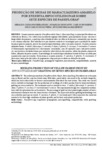Use este identificador para citar ou linkar para este item:
http://www.alice.cnptia.embrapa.br/alice/handle/doc/907192Registro completo de metadados
| Campo DC | Valor | Idioma |
|---|---|---|
| dc.contributor.author | NOGUEIRA FILHO, G. C. | pt_BR |
| dc.contributor.author | RONCATTO, G. | pt_BR |
| dc.contributor.author | RUGGIERO, C. | pt_BR |
| dc.contributor.author | OLIVEIRA, J. C. | pt_BR |
| dc.contributor.author | MALHEIROS, E. B. | pt_BR |
| dc.date.accessioned | 2011-11-24T11:11:11Z | pt_BR |
| dc.date.accessioned | 2011-11-24T11:11:11Z | pt_BR |
| dc.date.available | 2011-11-24T11:11:11Z | pt_BR |
| dc.date.available | 2011-11-24T11:11:11Z | pt_BR |
| dc.date.created | 2011-11-24 | pt_BR |
| dc.date.issued | 2011 | pt_BR |
| dc.identifier.citation | Revista Brasileira de Fruticultura, Cruz das Almas, v. 33, n. 1, p. 237-245, 2011. | pt_BR |
| dc.identifier.uri | http://www.alice.cnptia.embrapa.br/alice/handle/doc/907192 | pt_BR |
| dc.description | RESUMO - O maracujazeiro-amarelo (Passiflora edulis Sims. f. flavicarpa Deg.) é a principal Passifloraceae cultivada no Brasil, e seu cultivo tem encontrado algumas dificuldades, principalmente no que concerne à longevidade dos pomares, a qual tem sido reduzida devido à incidência de doenças e nematoides que atacam o seu sistema radicular. Este trabalho teve por objetivo estabelecer tecnologias para a produção de mudas de maracujazeiro-amarelo, através da enxertia hipocotiledonar, sobre sete porta-enxertos. Os porta-enxertos utilizados foram: P. edulis f. flavicarpa; P. caerulea; P. alata; P. gibertii; P. coccinea; P. cincinnata e P. setacea. O delineamento experimental foi o inteiramente casualizado, com 36 repetições para cada porta-enxerto. As características avaliadas foram: percentual de sobrevivência dos enxertos, altura das plantas, número de folhas, diâmetro do porta-enxerto. A metodologia de enxertia hipocotiledonar testada foi bem-sucedida para a maioria das espécies testadas. Destacaram-se os porta-enxertos: P. caerulea; P. gibertii; P. cincinnata e P. flavicarpa, tanto pelo alto índice de pegamento como pela precocidade na obtenção da muda. ABSTRACT - The yellow passion fruit (Passiflora edulis Sims f. flavicarpa Deg.) Passifloraceae is the main crop in Brazil, and the crop has found some difficulties, particularly concerned to the orchards longevity, which has been reduced due to diseases and nematodes that attack the root system. This study was carried out to establish technologies for the production of seedlings of yellow passion fruit by hypocotyledonary grafting on seven rootstocks. The treatments used as rootstocks were: P. edulis f. flavicarpa, P. caerulea, P. alata, P. giberti, P. coccinea, P. cincinnata and P. setacea. The experimental design was completely random- ized, with 36 replications for each rootstock. The percentage of graft survival, plant height, number of leaves and rootstock diameter were the characteristics evaluated. The hypocotyledonary grafting methodology was successful for most species tested. P. caerulea, P. giberti, P. cincinnata and P. flavicarpa were the stood out rootstocks by their high conditions of plants growth, and by their early plants production. Index terms: Passiflora spp.;vegetative propagation; micrografting; compatibility; table grafting; methodology. | pt_BR |
| dc.language.iso | por | pt_BR |
| dc.rights | openAccess | pt_BR |
| dc.subject | Micro-enxertia | pt_BR |
| dc.title | Produção de mudas de maracujazeiro-amarelo por enxertia hipocotiledonar sobre sete espécies de passifloras. | pt_BR |
| dc.type | Artigo de periódico | pt_BR |
| dc.date.updated | 2011-11-24T11:11:11Z | pt_BR |
| dc.subject.thesagro | Maracujá | pt_BR |
| dc.subject.thesagro | Muda | pt_BR |
| dc.subject.thesagro | Propagação vegetativa | pt_BR |
| riaa.ainfo.id | 907192 | pt_BR |
| riaa.ainfo.lastupdate | 2011-11-24 | pt_BR |
| dc.contributor.institution | GERALDO COSTA NOGUEIRA FILHO; GIVANILDO RONCATTO, CPAMT; CARLOS RUGGIERO, UNESP; JOÃO CARLOS DE OLIVEIRA, UNESP; EUCLIDES BRAGA MALHEIROS, UNESP. | pt_BR |
| Aparece nas coleções: | Artigo em periódico indexado (CPAMT)  | |
Arquivos associados a este item:
| Arquivo | Descrição | Tamanho | Formato | |
|---|---|---|---|---|
| 2011AP14.pdf | 331,33 kB | Adobe PDF |  Visualizar/Abrir |









